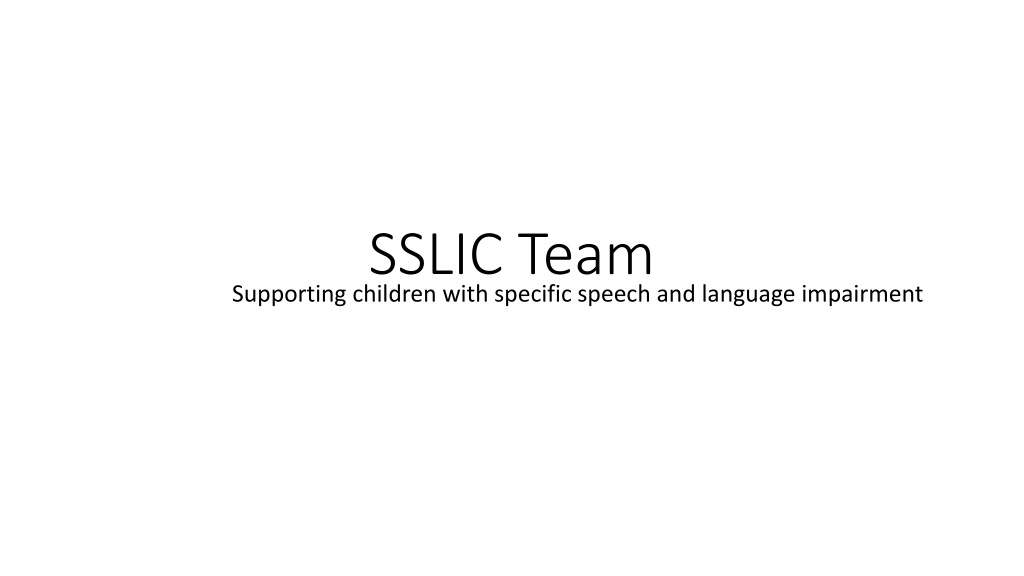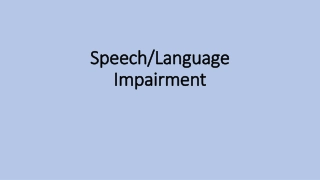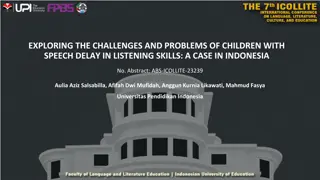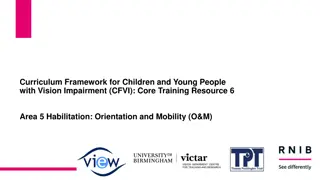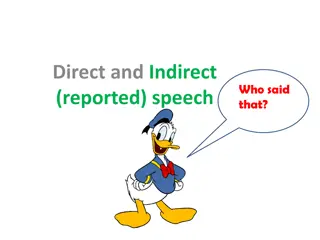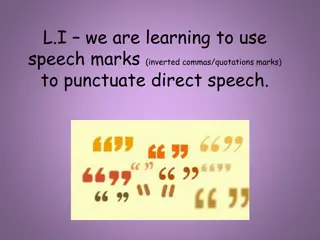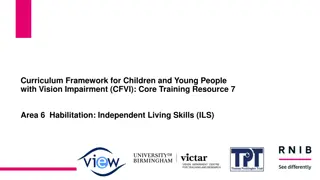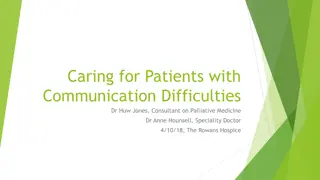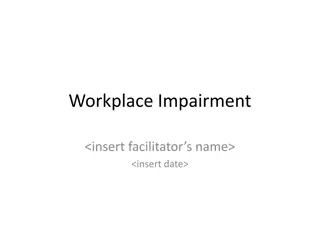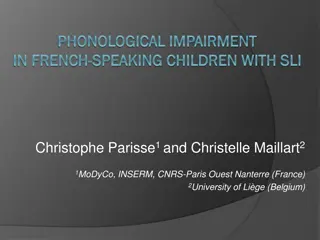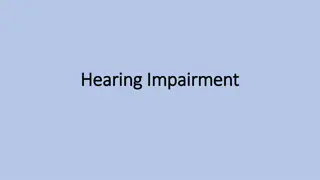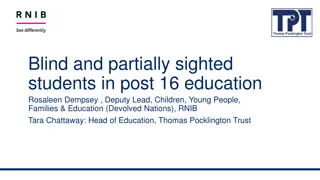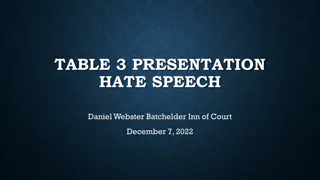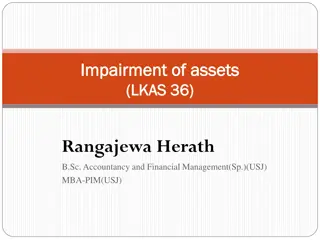Support for Children with Specific Speech and Language Impairment
A specialized team comprising language teachers and speech therapists provides support to children with severe speech and language challenges in mainstream schools. Interventions are tailored to each child's needs, with sessions conducted weekly either one-on-one or in small groups. Funding comes from joint health and education sources, with referrals accepted from community therapists. The team addresses Developmental Language Disorder (DLD), a condition affecting around 7% of children in the UK. The content also delves into key facts about DLD and provides definitions related to communication.
Uploaded on Sep 30, 2024 | 0 Views
Download Presentation

Please find below an Image/Link to download the presentation.
The content on the website is provided AS IS for your information and personal use only. It may not be sold, licensed, or shared on other websites without obtaining consent from the author. Download presentation by click this link. If you encounter any issues during the download, it is possible that the publisher has removed the file from their server.
E N D
Presentation Transcript
SSLIC Team Supporting children with specific speech and language impairment
Who we are and what we do A team comprised of specialist language teachers and specialist speech and language therapists. Support children with severe and specific speech and language impairment within their local mainstream school. The service targets children in KS1. The intervention is weekly and will comprise of 1,2,or 3 sessions per week dependent on the need of the child. This may be from both teacher and therapist, or one or the other. Sessions are generally 1:1, but may also be small groups or working alongside the teacher in the class. T.A. support for at least 1 session a week is required. This allows upskilling of class staff, and enables class staff to carry out follow up work through the week.
Funding and referrals The SSLIC team is jointly funded by health and education. Referrals to the SSLIC team come via health, from community therapists or from the speech and language groups at CDC. Schools and parents cannot refer directly to SSLIC, however, if they have concerns about a child's speech, language and communication needs they can refer to speech therapy services at Coral House.
Developmental Language Disorder (DLD) An international group of 57 experts (the CATALISE panel) led by Dr Dorothy Bishop agreed the term Language Disorder to refer to children with language difficulties that create obstacles to communication or learning in everyday life and where we know from past research that they are unlikely to catch up spontaneously. February 2017
DLD Key facts Around 7% of children in the UK have specific and primary communication impairments. The nature and impact of language impairments change as children get older and as educational and social demands change. Most children with SEN have difficulty with some aspect of speech, language and/or communication. In some areas, upwards of 50% of children struggle with the language demands of school on entry. On average, every school classroom in the UK will have 2-3 pupils who have some form of DLD.
Definitions Communication refers to: The way in which people use language to interact speaking and listening. Using language for different purposes and situations, for example to question, to clarify, to describe and to debate. Non verbal communication, for example, eye contact, turn taking, gestures and body language.
Definitions Speech refers to; Sounds used accurately to build up words. Processing speech sounds. Speaking fluently without too many hesitations or repletion of sounds or words. Language refers to; Expressive language, using words to convey meaning. Receptive language, understanding, processing and making sense of what people say.
Components of speech, language and communication Often we take our ability to use language for granted. Most children develop speech, language and communication readily and come to school fairly proficient in communication with others. Acquiring and developing effective speech, language and communication skills is an extremely complex process where each element can break down resulting in some degree of communication difficulty.
The Impact of SLCN Pupils need to have proficient language skills in order to use their language to learn. This is often a daily challenge for pupils with SLCN; just listening to the amount of language in school can be an exhausting task in itself.
Comprehension/understanding An ability to hold information long enough to process and understand it. An ability to understand more complex language; such as verbal reasoning skills. inference. Non literal language. An ability to understand language used for different purposes in different contexts.
Comprehension/understanding For effective understanding of language a child needs: A sufficient understanding of vocabulary; Concepts Prepositions Time sequencing An understanding of grammar; Word order Tenses An ability to understand complex language; Classroom instructions Conversations Narrative.
Speech To develop clear speech there needs to be the ability to: Listen and process speech sounds. Hear the difference between individual speech sounds. Be aware of the sounds in words and how sounds relate to letters (phonological awareness/phonic knowledge) Physically make the necessary speech sounds. Use these sounds in the right positions and combinations in words.
Speech exercise Tongue position for S
Expressive Language To develop effective expressive language there needs to be: A rich vocabulary. An appropriate use of grammar. The ability to put sequences of language together for explanations, conversations, story telling etc. The ability to use language appropriately for different purposes and contexts.
Impact of speech, learning and communication difficulties on learning. Pupils may have difficulties with literacy; decoding and segmenting words for reading and spelling, comprehension of reading. Pupils may have difficulty with understanding vocabulary to access the curriculum, such as concept language in maths. Pupils may have difficulty with higher order language skills such as predicting an outcome in science. Pupils may have difficulty with developing learning through conversations with peers.
Overcoming Barriers to Learning for Pupils with SLCN
Get the child's attention Listening an understanding are hard work, children switch off, so get their attention before you give an instruction. Say their name, make eye contact, get down to their level.
Cut down the amount you say Studies have shown that in some classrooms adults talk for up to 90% of the time. For a young person with SLCN this can feel overwhelming. One of the most effective ways of supporting pupils communication is by altering the amount we say and the way we say it. Think about structuring lessons and activities so there is a mixture of activity-type. This does not mean oversimplifying your language or making it patronising.
Chunking - one instruction at a time If you have a lot of information or instructions to give, break it down into a shorter chunk of language, pausing after each one. Use short simple sentences. A long block of spoken language can be difficult to process in one go.
Re-ordering Say things in the order you want them done. So instead of before you get your coat put your pencil in your drawer. say Put your pencil in the drawer, then get your coat.
Slow down Even slowing down your talking a bit means that pupils will give longer responses and say more. This doesn t mean you have to start talking in a sing song voice!
Wait after you have asked a question On average adults pause for just 1 second after asking a question before asking the next. Children often need more processing time to get their thoughts together and formulate a response. Waiting for just a couple of seconds more helps pupils to give longer responses and to understand more.
Give visual support Visual support can take many different forms. Children with SLCN find information easier to understand and process if it is supplemented by something they can look at. This could be; Visual timetable, class/individual Visual prompts for attention and behaviour Symbols for making choices. Demonstrating or showing rather than telling Using mind maps on the board.
Commenting For pupils with SLCN questions can be confusing and difficult to understand so commenting on what they are doing, rather than asking questions can support their thinking and learning. For example, So plants need sun to
Summarise List things needed to be done, maybe counting key points on fingers. Getting children to check understanding and repeat important bits of information, e.g. we need to write the date what do we need to write? Tell the person next to you, shout it out loud, or say it in a whisper.
Vocabulary Strategies for developing a wider vocabulary; Pre tutoring topic vocabulary Mind maps Vocabulary learning checklist Word mats Making links
Avoid Idioms Sarcasm Double meanings
Expressive Language Strategies to help children with expressive language difficulties: Model a good sentence; Wait for the child to talk Follow what they want to talk about, repeat what they say but extending their information and correcting sentence structure; In the water Yes he fell in the water with a big splash. Allow thinking time. Give praise.
Expressive language Giving forced alternatives for; speech, Is it a table or a cable? Grammar, The fox falled in the water or The fox fell in the water Vocabulary, Is it an acrobat or an astronaut
